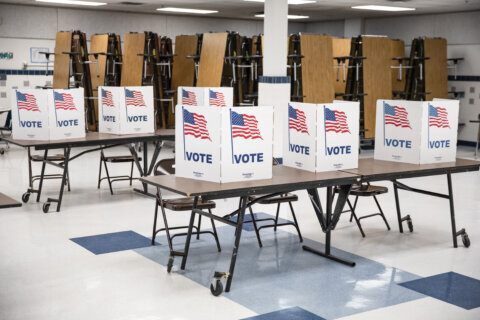WASHINGTON — A portion of the Interstate 66 express lanes project is on hold because of strong opposition from neighbors worried about noise, pollution and the design.
The region’s Transportation Planning Board took the unusual step on Wednesday to put off an air quality analysis for a stretch of the project between U.S. 50 and the Capital Beltway. Meanwhile, the board agreed to advance the analysis for the remainder of the project, which will run to Gainesville.
The delay gives the Fairfax County Board of Supervisors a chance to consider design revisions included in plans released last month and to make changes to proposed interchanges plus on- and off-ramps. The features would be included in an air quality analysis — a technical review required before any ramps or lanes could be built.
“If we come back and say any of those (access) points need to be stricken, they will be,” Supervisor Linda Smyth said.
The board is expected to receive more information about the latest design plans next month.
Neighborhood opposition
A small, active group of Dunn Loring residents who live in the shadow of the proposed on-ramps and off-ramps urged the Transportation Planning Board to agree to the delay.
Neighbors said the Virginia Department of Transportation has not factored in enough of their input and has gone back on previous promises that the ramps would not be larger than they appeared in plans made available to the public last year.
“It is painfully obvious that these changes are to ensure profitability to Express Mobility (Partners) at the expense of the residents and a community that has been in existence for over 130 years,” Mary Hagopian of Dunn Loring said.
The private company’s designs for the road were quietly released last month.
Del. Mark Keam, who represents the area, said he only learned of the proposed changes put into the revised plans through concerned neighbors. He said VDOT should have provided more information to neighbors and elected leaders.
Community meetings and briefings for regional lawmakers are scheduled over the next few weeks, including public meetings the second full week of June.
Designs not final
VDOT Deputy Northern Virginia District Administrator Renée Hamilton said the designs are still in flux.
“No decision will be made on this project until the public hearings, which are scheduled for the October time frame. That’s when you will have a final design for people to actually respond to and to reflect the changes that will be worked through throughout the process throughout the summer,” she said.
At a separate meeting Wednesday, VDOT Commissioner Charlie Kilpatrick said public input is not over.
“One of the areas that we are continuing to work with the concessionaire on are what are called alternative technical concepts,” Kilpatrick said. “Those ideas still require public involvement and environmental evaluation, so again those things are going on and continued outreach to the community as we continue to get that project toward construction.”
Express Mobility Partners, the private consortium that will build and operate the lanes, offered those concepts as cheaper options to build certain pieces of the project. Other changes could bring in more toll revenue, such as additional or redesigned on-ramps.
Virginia Transportation Secretary Aubrey Layne said at a Commonwealth Transportation Board meeting that he plans a number of events in Northern Virginia to explain how the lanes will work. The toll lanes outside the Beltway are due to open in 2022.
In other news
A separate, but related, project to toll solo drivers during an expanded rush hour on I-66 east of the Beltway is due to be completed later this year.
The Commonwealth Transportation Board approved procedural resolutions Wednesday to allow tolls on I-66 both east and west of the Beltway to move forward.
A separate vote approved a $45 million state loan to the operators of the 95 Express Lanes to convert the high occupancy lanes on Interstate 395 to tolled express lanes. Currently, the express lanes end near the Arlington County line but they will be extended to the Pentagon by 2020.







